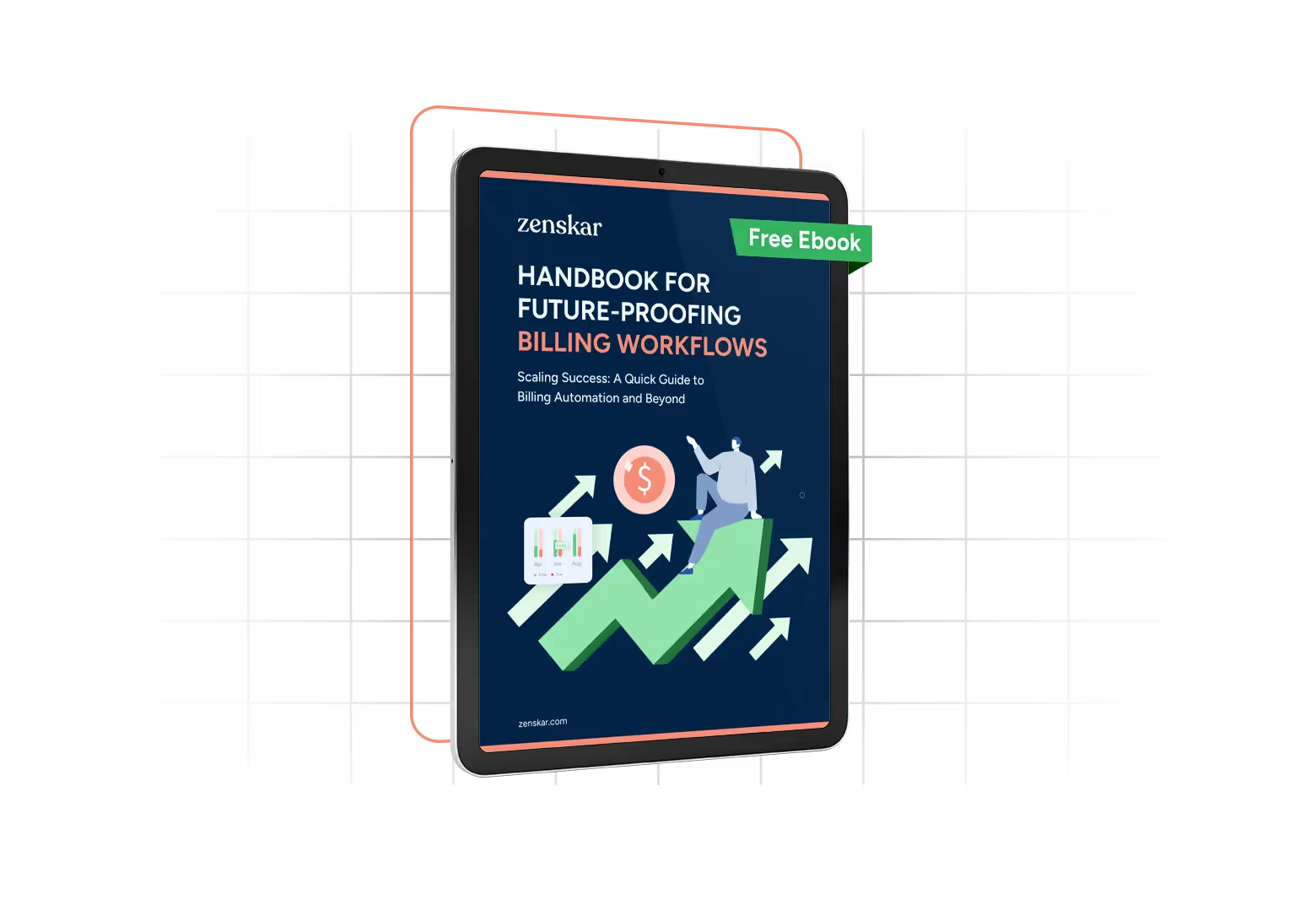How to Automate Multi-Entity Billing Without Breaking Your Workflow

A few months ago, we were helping a finance team at a fast-growing software company that had expanded into four countries. Their billing setup worked fine with little manual intervention, until they added new entities. Suddenly, what used to take minutes now took hours.
Each legal entity had to be billed separately because their ERP tool supported single-entity logic. Foreign exchange mismatches slowed revenue recognition. Local tax rules had to be handled manually. And since their ERP only supported single entities, mapping multiple entities became a task, leading to extreme manual work.
This is a common problem many growing companies face. The moment you add subsidiaries, international offices, or multiple product lines, multi entity reporting scales linearly, and painfully. More entities mean more spreadsheets, more reconciliations, and more room for error.
And before you think this is about hiring more people or bringing in consultants, it’s not. It’s about adopting a billing system that actually reflects how your business operates today. In this guide, we’ll show you how to automate multi-entity billing without breaking your existing workflows.
What is multi entity billing?
Multi-entity billing is the process of managing invoicing, payments, taxes, and revenue recognition across multiple legal entities, such as subsidiaries, international offices, or separate product lines, within a single organization. Instead of treating each entity as an isolated system, it consolidates operations while respecting each entity’s unique currency, tax rules, and compliance requirements.
What are the common use cases of multi-entity billing?
Multi-entity accounting becomes necessary sooner than most teams expect. Sometimes it starts with a new international office; other times, it’s the result of a product line spin-off or an acquisition.
What are the core challenges in multi-entity billing?
1. Manual back and forth between teams
Most ERPs are built around single-entity logic. Even in those setups, a bit of manual coordination is usually required. But once you scale to multiple entities, each with its own billing, tax, and approval workflows, that manual back-and-forth grows exponentially. Finance teams end up chasing inputs across countries, systems, and departments just to keep things moving.
2. Inconsistent invoicing
Each entity might use a different format, currency, or billing system, leading to billing errors, delayed payments, and frustrated customers. Finance teams spend hours fixing issues that could’ve been avoided with standardized templates.
3. Local tax rules
Every entity operates under its own tax laws, rates, and filing requirements. Without localized configurations, even basic invoices can be non-compliant. This results in missed deadlines, penalties, and a constant firefight with tax authorities. Similarly, when companies expand globally, managing teams across multiple countries becomes increasingly complex. Adopting global hiring solutions such as reliable global EOR services can help streamline cross-border recruitment, ensuring compliance with local labor laws and reducing the administrative burden. Just as a multi-entity billing system consolidates complex operations, global hiring platforms offer a unified approach to managing diverse workforces, enabling smoother integration across regions.
4. Intercompany billing
When one entity invoices another, tracking internal charges manually across spreadsheets becomes unmanageable. Mistakes here throw off consolidated financials and create accounting reconciliation nightmares at month-end.
5. Multiple currencies
Revenue and expenses in different currencies mean teams must track foreign exchange rates, conversions, and gains/losses across entities. Even minor rate fluctuations cause reporting mismatches and revenue recognition delays.
6. No unified view
Data lives in silos, ERPs, billing systems, spreadsheets, making it hard to get a single view of performance. Finance leaders can't confidently forecast or spot red flags without hours of manual work.
7. Manual revenue tracking
Without automated revenue recognition software, teams manage deferrals and contract obligations manually in Excel. This increases the risk of errors, slows down audits, and forces last-minute accounting patches every month.
Key features to look for in a multi-entity billing platform
1. Entity-specific invoicing
Your billing tool should let each entity operate with its own identity, separate branding, invoice notes, tax ID, and terms. This is especially critical when subsidiaries are in different countries or serve different customer segments. For example, your UK entity bills in GBP with UK VAT and a local address, while your US entity bills in USD with different net terms and no VAT.
2. Multi-currency and multi-language support
Invoices should automatically localize based on the entity and customer’s location. If your French entity invoices in EUR and the US one in USD, this should happen without manual intervention. For example, a French customer receives an invoice in EUR, in French, with the correct local tax rate applied, even if your headquarters is in the US.
3. Flexible product catalog management
You need the option to manage products globally or at the entity level. One client we worked with had shared SKUs for consistency but priced them differently by market, a setup many tools don’t support natively. For example, your core product may be priced at $100 in the US and €95 in the EU. The platform should support this without requiring two separate SKUs.
4. Customer contracts (including subscriptions, usage, and other recurring billing methods)
Your multi-entity billing platform should allow you to track both shared and entity-specific customer records. For example, if a customer buys from both your US and Canada entities, the system should let you track them across both while keeping contracts and taxes entity-specific.
5. Multi-entity revenue recognition
Accurate revenue recognition per entity is non-negotiable. Your platform should support GAAP/IFRS-compliant schedules, especially for partial billing, bundled contracts, and milestone-based services. For instance, a three-year contract billed upfront by your Singapore entity must recognize revenue monthly under local IFRS standards.
6. Finance stack integrations
Billing doesn’t live in isolation. Your billing platform should plug into your ERP, CRM, tax engine, and payment gateway, so data flows cleanly across systems, eliminating manual syncs, reducing reconciliation errors, and keeping your books audit-ready in real time.
7. Tax and compliance controls
Entities operating across geographies face unique tax rules, some charge VAT, others GST, and some require complex invoicing formats. Your billing system should let you configure tax rates, invoice formats, and tax IDs per entity. This ensures compliance with local laws and reduces the risk of audit penalties.
Best practices for multi-entity billing
1. Avoid duplicating invoice logic in each entity
Define invoice logic (subscription management, discounts, usage, taxes) once at the global level. Apply local formatting and compliance rules per entity to reduce maintenance and avoid conflicts
2. Use shared product definitions with localized pricing
Define products globally, including measurement units and usage metrics, and let each entity apply its own pricing. This ensures consistent reporting and flexible monetization..
3. Set clear rules for entity ownership of customers and contracts
Make it explicit which entity owns each customer relationship and associated revenue. Automate this with geography-based rules or account-level tagging to eliminate confusion during reconciliation and tax filings.
4. Align intercompany workflows upfront
If one entity sells and another fulfills (or if cross-entity subscriptions are common), define how revenue and cost will be split at the contract level. Automating this logic early saves you from messy manual journal entries and delayed close cycles later.
5. Standardize month-end reconciliation routines across entities
Build a consistent checklist, bank reconciliation, deferred revenue tracking, AR/AP aging, for all entities. Having a uniform close cadence across entities makes group-level consolidation much faster and audit-prep more predictable.
6. Design reports to roll up by both entity and region
Don’t just consolidate; report with intelligence. Set up dashboards that let you slice SaaS metrics by entity, geography, or business line so performance trends are clear. It also helps with board reporting, tax provisioning, and M&A modeling.
7. Limit access and workflows by entity
Implement role-based access controls that are entity-aware. This ensures that teams only access the books and billing workflows relevant to their region or responsibility, critical when you’re scaling finance teams across time zones and regulatory environments.
Choosing the Right Software
Billing and revenue recognition needs have outgrown legacy tools. Whether you're scaling usage-based pricing or managing complex contracts, here’s how Zenskar compares to Stripe and Chargebee across core capabilities.
Why generic AP automation tools don’t solve billing complexity?
Most account payables automation tools are designed to handle routine accounts payable workflows, vendor invoices, approvals, and payments. While they streamline procurement and payables, they fall short when it comes to managing customer-facing billing complexity.
Modern software businesses need to manage variable pricing, usage-based pricing models, multi-entity invoicing, contract-level entitlements, and revenue recognition, most of which doesn’t fall under traditional AP automation. These workflows require systems that can:
1. Support custom billing schedules, usage thresholds, and ramp deals
Set up contracts where pricing starts low and scales with usage or time, like $1,000/month in Year 1, increasing to $5,000/month by Year 3, without requiring manual changes or developer involvement.
2. Automate invoice generation based on real-time contract data
Generate accurate, timely invoices that reflect the latest contract terms, including mid-cycle upgrades, custom billing cadences, or bundled entitlements, without spreadsheet intervention.
3. Align revenue recognition with performance obligations and ASC 606 compliance
Automatically derive revenue schedules based on contract line items, billing events, or delivery milestones, and push compliant journal entries to your ERP in real time.
4. Ingest, aggregate, and monitor usage data from multiple systems
Pull usage events from product analytics, data warehouses, or spreadsheets, then apply pricing logic and aggregation rules, all without code, to bill customers accurately and experiment with new models.
5. Allow finance teams to configure pricing, contracts, and RevRec logic without engineering support
Finance teams can launch a new pricing plan, build custom RevRec rules, or modify contract logic in minutes using a drag-and-drop interface, no JIRA tickets or developer bottlenecks.
When billing involves more than a static invoice once a month, a specialized solution, not an AP tool, is required to control cost, compliance, and scale.
When to upgrade from Stripe or QuickBooks to enterprise billing?
Tools like Stripe Billing and QuickBooks are effective for basic workflows, flat-fee subscriptions, straightforward invoicing, or limited contract variations. But as SaaS companies grow, so do billing needs, and those needs quickly outpace these systems.
Signs it's time to upgrade:
- You're managing multiple pricing models (hybrid, usage-based, prepaid/postpaid)
- You need to ingest and aggregate real-time usage data
- Contracts require custom terms, billing logic, and invoicing rules
- Revenue recognition is still being tracked manually or in spreadsheets
- Engineering teams are pulled into every pricing update or billing fix
- Finance lacks control over the full billing lifecycle
An enterprise-grade billing engine can eliminate manual work, reduce developer dependence, and deliver accurate billing and revenue insights across product lines, currencies, and entities. The right upgrade gives finance complete autonomy while future-proofing your revenue operations.
Total cost of ownership considerations
- Engineering hours to implement pricing changes
- Manual workarounds for revenue recognition and invoicing
- Limited integrations leading to reconciliation overhead
- Per-invoice or per-transaction pricing that scales poorly
- Hidden costs from poor auditability and compliance gaps
Automate multi-entity billing with Zenskar
Finance teams today are under pressure to support complex pricing models, expand across regions, stay compliant, and close the books faster, all while reducing dependence on engineering.
ERPs often fall short when it comes to usage-based pricing, custom contracts, mid-cycle changes, or multi-entity reporting, often relying on manual workarounds. As your business scales, so does the manual effort, with billing and revenue recognition often pulling from disconnected data sources, making reconciliation across entities slow and error-prone.
Zenskar is purpose-built for this reality, a billing and revenue automation platform designed for modern, multi-entity finance teams. It lets you:
- Launch new pricing models without code. We’ve seen companies delay product launches by up to six months because their billing systems couldn’t support the new pricing logic. With Zenskar, finance teams can configure even complex models in minutes, no engineering required.
- Bill accurately across multiple entities and tax jurisdictions.
- Automate ASC 606 and IFRS 15 compliant revenue recognition.
- Sync clean journal entries into your ERP, regardless of stack
- Get to a zero to one day month-end close for Revenue, Deferred Revenue, AR, and other GL accounts related to the revenue side of your business
- Can also integrate with different ERPs for different entities if needed.
Book a demo or watch our product tour to discover how we're helping modern finance teams streamline multi-entity billing.
Switch to zero-touch FinOps with Zenskar
Vertice closed books 70% faster with Zenskar
We launched our product 4 months faster by switching to Zenskar instead of building an in-house billing and RevRec system.

Frequently asked questions
Billing handles how you charge. Accounting handles how you recognize and report revenue per entity.
Yes. Each entity can bill in its own currency, with automatic FX handling and group-level rollups.
Each entity applies its local tax rules automatically via integrations like Avalara.
Yes. A customer can be billed by multiple entities, based on geography or contract.
Yes. Each entity can have its own pricing, frequency, and invoice logic.

























